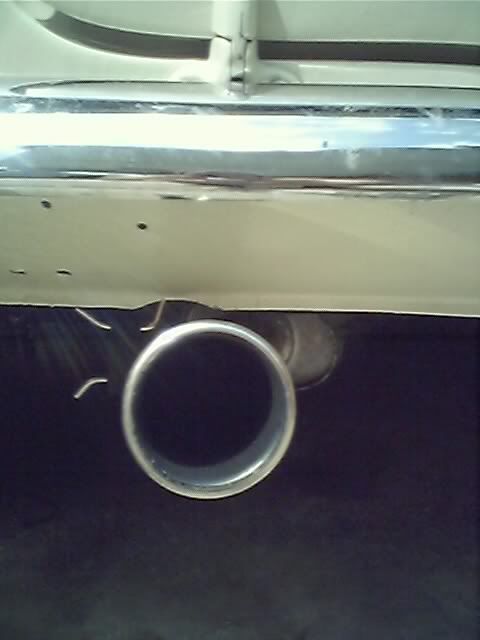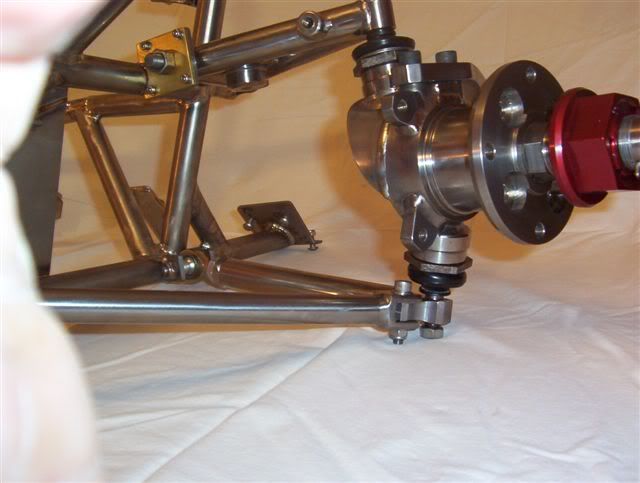| Page: |
| Home > MS Code Discussions > MPi injection characteristic data | |||||||
|
Forum Mod 10980 Posts Member #: 17 ***16*** SouthPark, Colorado |
13th Aug, 2007 at 12:14:52am
Well, this superceeds everything we have thought / believed we knew in the past about the MEMS MPi.
Edited by turbodave16v on 11th Oct, 2007. On 17th Nov, 2014 Tom Fenton said:
Sorry to say My Herpes are no better Ready to feel Ancient ??? This is 26 years old as of 2022 https://youtu.be/YQQokcoOzeY |
||||||
|
1267 Posts Member #: 831 Post Whore Montreal, Canada |
13th Aug, 2007 at 02:07:18am
Thank you for doing that work. This is very interesting and intriguing data.
|
||||||
|
Forum Mod 10980 Posts Member #: 17 ***16*** SouthPark, Colorado |
13th Aug, 2007 at 04:58:32am
This did come across as negative
On 17th Nov, 2014 Tom Fenton said:
Sorry to say My Herpes are no better Ready to feel Ancient ??? This is 26 years old as of 2022 https://youtu.be/YQQokcoOzeY |
||||||
|
1267 Posts Member #: 831 Post Whore Montreal, Canada |
13th Aug, 2007 at 06:50:40am
Sorry about that, that was not my intent. I'll elaborate a bit on the why I say I would need more information.
|
||||||
 6752 Posts Member #: 828 Post Whore uranus |
13th Aug, 2007 at 09:49:04am
fascinating,thank you dave .thats very usefull.
Medusa + injection = too much torque for the dyno ..https://youtu.be/qg5o0_tJxYM |
||||||
|
2514 Posts Member #: 1217 I like nice quiet girly Minis Cheltenham, Gloucestershire |
13th Aug, 2007 at 09:59:05am
Dave, thanks for the data ..... certainly has me thinking!!! I am with Jean however that TDC / cam triggers would have been useful (reading the other post I see you tried to get a TDC signal but it didn't work out for you).
Every day is a school day ...........
On 27th of Sep, 2007 at 12:45pm Jimster said:
why do you you think I got a girlfriend with small hands? |
||||||
|
8604 Posts Member #: 573 Formerly Axel Podland |
13th Aug, 2007 at 10:33:39am
Very interesting.
Saul Bellow - "A great deal of intelligence can be invested in ignorance when the need for illusion is deep."
|
||||||
|
8604 Posts Member #: 573 Formerly Axel Podland |
13th Aug, 2007 at 12:04:11pm
Some more thoughts on the data:
Edited by Paul S on 13th Aug, 2007. Saul Bellow - "A great deal of intelligence can be invested in ignorance when the need for illusion is deep."
|
||||||
|
Forum Mod 10980 Posts Member #: 17 ***16*** SouthPark, Colorado |
13th Aug, 2007 at 02:34:11pm
Awight Guys!
On 17th Nov, 2014 Tom Fenton said:
Sorry to say My Herpes are no better Ready to feel Ancient ??? This is 26 years old as of 2022 https://youtu.be/YQQokcoOzeY |
||||||
|
8604 Posts Member #: 573 Formerly Axel Podland |
13th Aug, 2007 at 05:17:33pm
I had earlier assumed that the TDC at or before the injection point was the TDC when the intake valves were open.
Saul Bellow - "A great deal of intelligence can be invested in ignorance when the need for illusion is deep."
|
||||||
|
Forum Mod 10980 Posts Member #: 17 ***16*** SouthPark, Colorado |
13th Aug, 2007 at 07:24:48pm
I showed this to my mate Graeme earlier - and a lengthy discussion started, where we suspect we migth have an answer.
On 17th Nov, 2014 Tom Fenton said:
Sorry to say My Herpes are no better Ready to feel Ancient ??? This is 26 years old as of 2022 https://youtu.be/YQQokcoOzeY |
||||||
|
Forum Mod 10980 Posts Member #: 17 ***16*** SouthPark, Colorado |
13th Aug, 2007 at 07:26:31pm
Does anyone have a wiring diagram for the K-series and A-series including pin-outs on the ECU for 1997 model year MEMS?
On 17th Nov, 2014 Tom Fenton said:
Sorry to say My Herpes are no better Ready to feel Ancient ??? This is 26 years old as of 2022 https://youtu.be/YQQokcoOzeY |
||||||
 4559 Posts Member #: 786 Post Whore Bermingum |
13th Aug, 2007 at 07:34:48pm
Hi,
Edited by Bat on 13th Aug, 2007. VEMs Authorised Installer / Re-seller. K head kits now available!
|
||||||
 11046 Posts Member #: 965 Post Whore Preston On The Brook |
13th Aug, 2007 at 08:11:11pm
Dave, they are wired in the loom
Edited by Sprocket on 13th Aug, 2007. On 26th Oct, 2004 TurboDave16v said:
Is it A-Series only? I think it should be... So when some joey comes on here about how his 16v turbo vauxhall is great compared to ours, he can be given the 'bird'... On 26th Oct, 2004 Tom Fenton said:
Yep I agree with TD........ |
||||||
 1497 Posts Member #: 100 Parisien Turbo Expert Paris\' suburb |
13th Aug, 2007 at 08:15:13pm
On 13th of Aug, 2007 at 07:24pm TurboDave said:
- OR - they're wired together inside the MPi loom. I can open an mpi wiring loom to see. what could perhaps help you to "handle" how they done it, is that I know that a 114 gti spi mems does work on a cooper spi. |
||||||
 11046 Posts Member #: 965 Post Whore Preston On The Brook |
13th Aug, 2007 at 08:16:44pm
On 13th of Aug, 2007 at 08:15pm fab said:
if you're looking for: On 13th of Aug, 2007 at 07:24pm TurboDave said:
- OR - they're wired together inside the MPi loom. I can open an mpi wiring loom to see. what could perhaps help you to "handle" how they done it, is that I know that a 114 gti spi mems does work on a cooper spi. I Know, but it does help if you have 1400ccs as well 
On 26th Oct, 2004 TurboDave16v said:
Is it A-Series only? I think it should be... So when some joey comes on here about how his 16v turbo vauxhall is great compared to ours, he can be given the 'bird'... On 26th Oct, 2004 Tom Fenton said:
Yep I agree with TD........ |
||||||
|
7 Posts Member #: 1874 Junior Member Swindon |
13th Aug, 2007 at 09:33:29pm
Firstly, good work TurboDave!
|
||||||
 2909 Posts Member #: 83 Post Whore Glasgow, Scotland |
13th Aug, 2007 at 09:39:51pm
with regards the adaption of the ecu, i jsut had a quick look over the diagrams, the MPi mini does indeed have 4 injector outputs, paired together in the wiring loom and one pair drivign each injector. Wiring diagram for the VVC mems unit show the same injector pin numbers but one for each injecor. jsut to confirm what you already thought! turbo 16v k-series 11.9@118.9 :)
|
||||||
 11046 Posts Member #: 965 Post Whore Preston On The Brook |
13th Aug, 2007 at 10:08:54pm
this is the difference though, the MEMSJ2 ECU and KV6 engine was designed to run two seperate cylinder banks and as such two seperate fuel tables. The wiring for this ECU also shows two lambda sensors to suport this. In escence its two seperate 3 cylinder engines.
Edited by Sprocket on 13th Aug, 2007. On 26th Oct, 2004 TurboDave16v said:
Is it A-Series only? I think it should be... So when some joey comes on here about how his 16v turbo vauxhall is great compared to ours, he can be given the 'bird'... On 26th Oct, 2004 Tom Fenton said:
Yep I agree with TD........ |
||||||
 11046 Posts Member #: 965 Post Whore Preston On The Brook |
13th Aug, 2007 at 10:26:09pm
MPi flywheel data
Edited by Sprocket on 13th Aug, 2007. On 26th Oct, 2004 TurboDave16v said:
Is it A-Series only? I think it should be... So when some joey comes on here about how his 16v turbo vauxhall is great compared to ours, he can be given the 'bird'... On 26th Oct, 2004 Tom Fenton said:
Yep I agree with TD........ |
||||||
|
4314 Posts Member #: 700 Formerly British Open Classic The West Country |
13th Aug, 2007 at 11:08:05pm
On 13th of Aug, 2007 at 09:59am RogerM said:
(Rob H .... I know your reading this .... I need your help ..... well at least your wideband ..lol) Read yes, but struggling to follow, anyway I'm more than hapy to lend my wideband to the cause. EDT: After you weld my cage in. Edited by Rob H on 14th Aug, 2007. Isambard Kingdom Brunel said:
Nothing is impossible if you are an Engineer |
||||||
|
2514 Posts Member #: 1217 I like nice quiet girly Minis Cheltenham, Gloucestershire |
14th Aug, 2007 at 10:21:47pm
Rob .... thanks for that, it's a great start.
Every day is a school day ...........
On 27th of Sep, 2007 at 12:45pm Jimster said:
why do you you think I got a girlfriend with small hands? |
||||||
|
Site Admin  15300 Posts Member #: 337 Fearless Tom Fenton, Avon Park 2007 & 2008 class D winner & TM legend. |
14th Aug, 2007 at 10:55:27pm
Mine is available for testing if required.
On 29th Nov, 2016 madmk1 said:
On 28th Nov, 2016 Rob Gavin said:
I refuse to pay for anything else Like fuel 😂😂 |
||||||
 6965 Posts Member #: 507 Fastest A Series Mini in the World leeds/wakefield. |
15th Aug, 2007 at 08:39:37pm
why has everyone on this topic started talking fooking Russian,
|
||||||
|
Site Admin  15300 Posts Member #: 337 Fearless Tom Fenton, Avon Park 2007 & 2008 class D winner & TM legend. |
15th Aug, 2007 at 08:59:33pm
Which is why I wired the ECU in The DON and you didn't........LOL!!!!!
On 29th Nov, 2016 madmk1 said:
On 28th Nov, 2016 Rob Gavin said:
I refuse to pay for anything else Like fuel 😂😂 |
||||||
| Home > MS Code Discussions > MPi injection characteristic data | |||||||
|
|||||||
| Page: |


 )
)